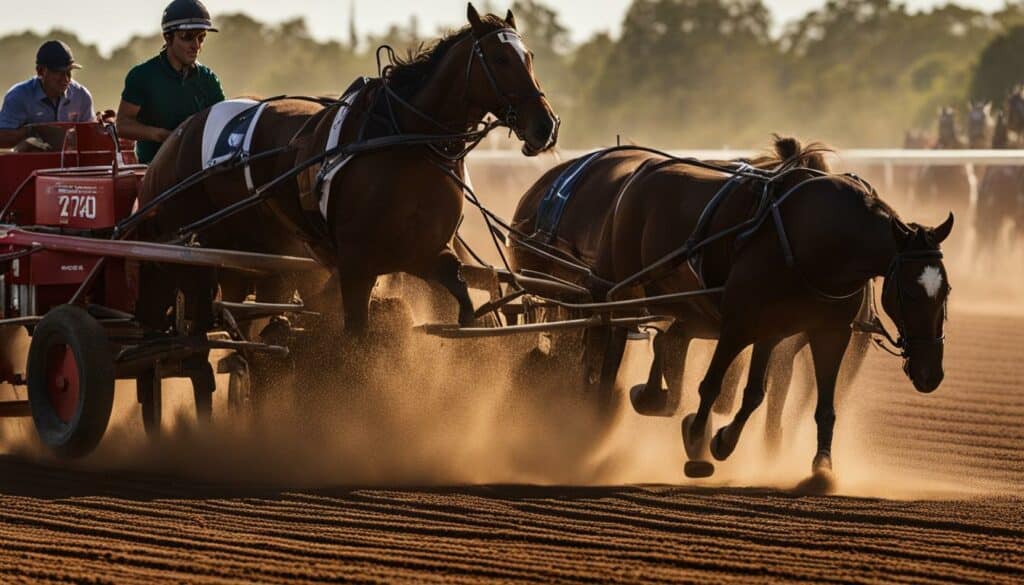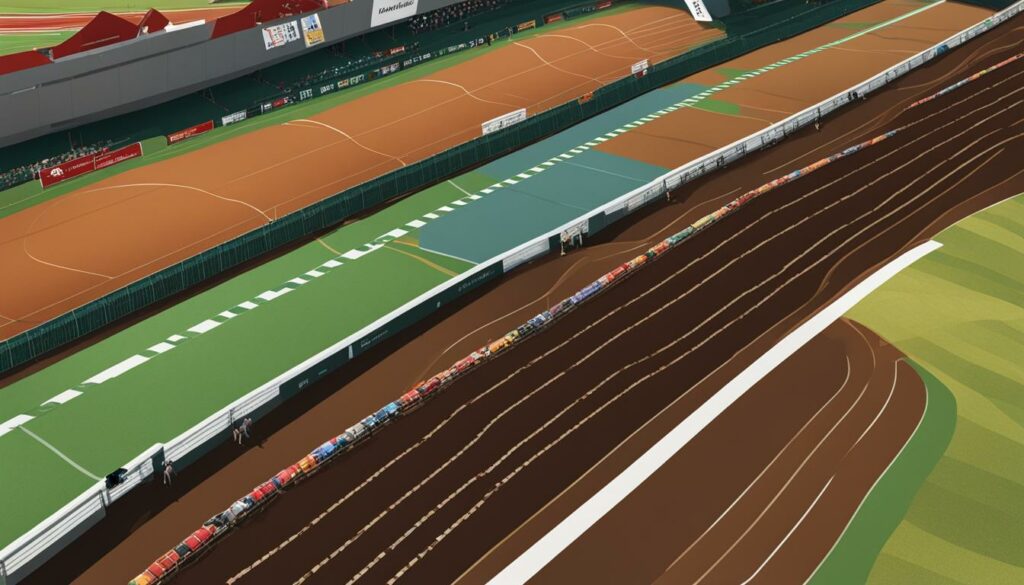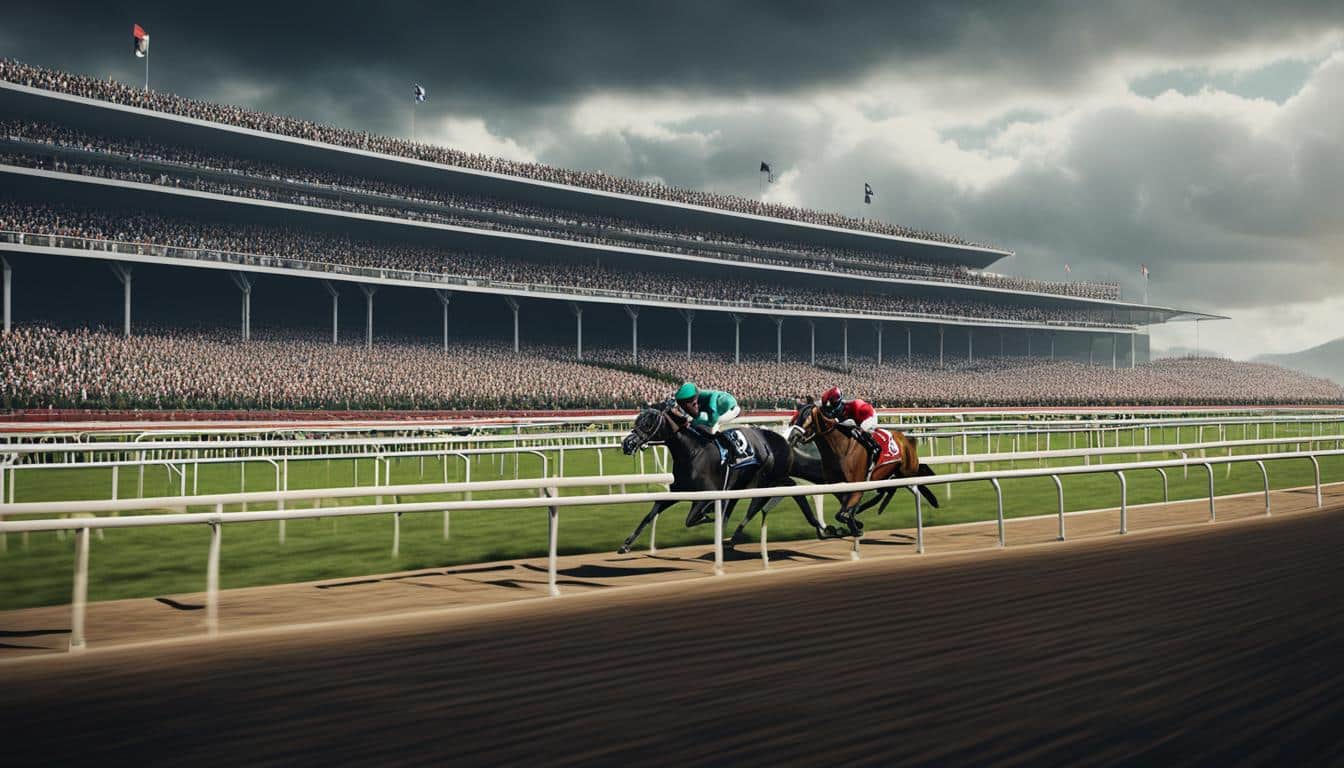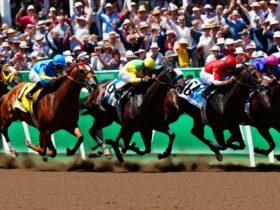Horse racing is a thrilling sport that requires optimal track conditions to ensure the safety and performance of both the horses and riders. Track conditions can significantly impact the outcome of a race, making it crucial to understand the factors that influence them.
In this section, we will examine the importance of optimal track conditions for successful horse racing. We will discuss the various factors that contribute to horse racing track conditions, including the type of track surface, weather conditions, and proper maintenance. Additionally, we will explore the best track conditions for horse racing and how they can affect the event’s overall success.
Understanding the significance of optimal track conditions can help ensure a competitive yet safe environment for all participants. By prioritizing proper track conditions, horse racing events can provide an exciting and enjoyable experience for both avid fans and casual spectators.
Factors Affecting Horse Racing Track Conditions
When it comes to horse racing, the track conditions can make a significant difference in the outcome of a race. To understand how these conditions impact racing, we must first examine the factors that affect the track. The major factors include the horse racing track surface, track condition factors in horse racing, and how weather affects horse racing.
Horse Racing Track Surface
The type of surface a horse runs on can greatly impact its performance. The main track surfaces are dirt, turf, and synthetic. Dirt surfaces are generally the most common and are made up of a combination of clay, sand, and silt. They can be affected by weather conditions and become dry or muddy. Turf is made up of natural grass, and synthetic tracks are made of materials such as plastic or rubber. Each surface has unique features that affect the speed of the horses and their performance.
Track Condition Factors in Horse Racing
Other factors can impact track conditions, including how often the track is used and how it is maintained. After races, tracks can become compacted, making it harder for horses to run on them. This compaction can affect how much the surface will give when horses’ hooves strike the ground. That’s why regular track maintenance is critical to ensure that the track is in good condition for racing. Improper maintenance can lead to inconsistencies in the track, which can result in injuries to the horses or jockeys.
How Weather Affects Horse Racing
Weather conditions, such as rain or extreme heat, can also have a significant impact on track conditions. If it rains, the dirt surface can become muddy and slow, which can make it difficult for horses to get traction. Extreme heat can cause the track to dry out, making it too hard for horses to run on and causing injuries. In these weather conditions, the track maintenance must adjust accordingly and work to ensure that the surface is in optimal shape for racing.
“A horse is the projection of peoples’ dreams about themselves – strong, powerful, beautiful – and it has the capability of giving us escape from our mundane existence.” – Pam Brown
Importance of Proper Horse Racing Track Maintenance
Proper horse racing track maintenance is crucial for maintaining optimal track conditions. Regular maintenance helps ensure the safety of the horses and riders and promotes fair competition. The following are some of the essential steps involved in maintaining horse racing tracks:
| Maintenance Steps | Details |
|---|---|
| Regular watering | Tracks should be watered frequently to prevent the surface from becoming hard and compacted. This helps maintain a consistent surface that is safe and conducive to racing. |
| Harrowing | During harrowing, machines drag heavy chains across the surface to break up clods of dirt and ensure even compaction. This promotes a resilient and well-draining surface that is safer and more stable. |
| Rolling | Rolling compacts the surface and increases its density, helping to prevent cuts and injuries to the horses. It also contributes to a consistent track surface that is fair for all competitors. |
In addition to these maintenance steps, proper track preparation before races is equally important. This includes testing the surface for consistency and firmness, as well as selecting the appropriate track conditioner based on weather conditions.

“Proper track preparation and maintenance are essential for creating safe and consistent track conditions for all competitors.”
Understanding Horse Racing Track Condition Ratings
When it comes to determining the suitability of a racetrack for a horse race, track condition ratings are crucial. Trainers, jockeys, and bettors rely on these ratings to make informed decisions, as they provide valuable insight into the condition of the track.
There are several different rating systems used to assess horse racing track conditions. One commonly used system is the Racing Post system, which rates tracks on a scale of 1 to 10 based on factors such as recent rainfall, the type of ground, and the going stick reading. Another popular system is the Beyer Speed Figure system, which is used to measure a horse’s performance relative to its past performances and the track’s current condition.

Track Condition Rating Terminology
Understanding the terminology used to describe track condition ratings is essential for interpreting and using these ratings effectively. Here are some of the common terms you may come across:
| Rating | Description |
|---|---|
| Firm | Hard, dry track surface |
| Good | Well-maintained track with some give |
| Soft | Moist track with more give |
| Heavy | Muddy track with significant give |
It is important to note that the terminology and rating systems used may vary depending on the region and the organization conducting the rating.
“When assessing track condition ratings, it is crucial to consider the rating system used, the terminology used, and the current weather conditions to make an informed decision about a horse’s suitability to race on a particular track.”
Conclusion:
Creating optimal track conditions is essential for successful horse racing. It involves various factors such as the track surface, weather conditions, and proper maintenance. By ensuring these factors are considered, horse racing events can offer a safe and competitive environment for both horses and participants.
It is crucial to understand the significance of optimal track conditions for horse racing. Creating a suitable environment for horses can ensure they perform at their best and stay safe during races. Additionally, it can make horse racing events more enjoyable for all involved.
In conclusion, prioritizing optimal track conditions helps to promote successful horse racing events. It is important to understand the different factors that influence track conditions and work towards creating safe and competitive conditions. By doing so, horse racing events can create a positive and enjoyable experience for all involved.












